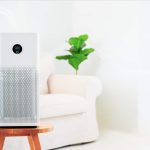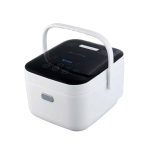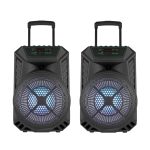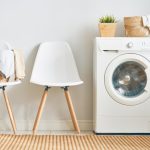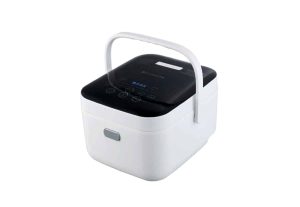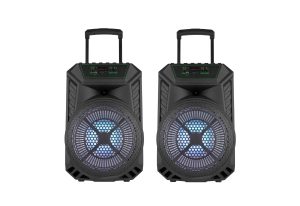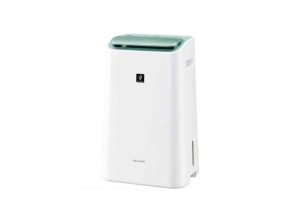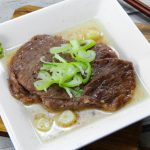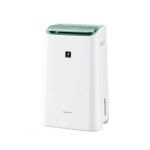Maintaining good indoor air quality is essential for health, especially in densely populated urban areas with high levels of air pollution. Dehumidifiers are a popular solution for improving air quality by reducing humidity levels in a room. This helps prevent the growth of mold and mildew, which can damage belongings.
Here’s a breakdown of the differences between humidifiers and dehumidifiers:
- Function: Humidifiers increase humidity, while dehumidifiers decrease humidity.
- Climate: Humidifiers are often used in climates with dry winters. Dehumidifiers are well-suited for humid climates.
- Mechanism: Humidifiers release water vapor into the air. Dehumidifiers capture moisture from the air.
Given Indonesia’s tropical climate and naturally high humidity, dehumidifiers can be particularly useful. To choose the best dehumidifier, consider the following:
Baca Artikel Terkait
Key Considerations When Choosing a Dehumidifier
-
Tank Capacity and Absorption Rate:
- Consider the dehumidifier’s absorption rate relative to the tank size. A small tank with a high absorption rate means frequent emptying.
- Look for features like "Auto Off" when the tank is full.
- Some models allow for continuous drainage via a hose.
-
Power Consumption:
- Dehumidifiers are electrical appliances, so be mindful of their power consumption.
- Higher wattage translates to higher electricity bills.
- Estimate your potential energy costs based on your intended usage.
-
Coverage Area:
- Each dehumidifier has a specific coverage area.
- A dehumidifier with a small coverage area might not be effective in a large room.
-
Size and Portability:
- Consider the dehumidifier’s dimensions and how it will fit in your space.
- Too large, and it may feel cramped.
-
Features:
- Timer: Set operating times.
- Auto Defrost: Prevents ice buildup.
- Child Lock: Prevents children from tampering with the settings.
- Sleep Mode: Quieter operation.
- Strong Mode: Increased dehumidification power.
Recommended Dehumidifiers
Here are a few dehumidifier recommendations, with varying features and price points:
-
Midea Dehumidifier:
- 5-year warranty.
- 190W power consumption.
- HEPA filter to capture 99.9% of pollutants.
- Tri Care Health and double-bulb UVC+ technology for disinfection.
- 360° wheels.
- Humidity sensor with color indicator (Green: 45%-65%, Yellow: <45%, Red: >65%).
- Eco-friendly refrigerant.
-
Simplus Dehumidifier:
- 600ml capacity.
- Low energy consumption (23W).
- Suitable for rooms up to 15m2.
- Quiet operation.
- Automatic shut-off when the tank is full.
- One-button operation with indicator light.
-
Notale Mini Dehumidifier NTL-MD1:
- Portable.
- 25W power consumption.
- Can be used up to 300 times per charge.
- Suitable for closets, bedrooms, shoe racks, bookcases, cars, and small lockers.
- Indicator lights (Orange: Ready, Dark Green: Needs charging).
-
LEKA DH6223 BreezePro Dehumidifier:
- 65W power consumption.
- Coverage area: 20m2.
- Noise level: <39dB.
- 2-liter tank capacity.
- Absorbs up to 650ml per day.
- Smart Detector light with 7 color options.
- Auto Off sensor.
- Timer (8-48 hours).
- Auto Mode, Sleep Mode, and Strong Mode.
-
Stadler Form Albert:
- Suitable for rooms up to 70m2.
- 230W power consumption.
- Noise level: 33-44 dB(A).
- 4.6-liter tank capacity.
- Hygrostat for humidity control.
- Timer, automatic shut-off, and swing mode.
-
LEKA DH6220 Marine Dehumidifier:
- Coverage area: 10m2.
- 23W power consumption.
- 800ml capacity.
- Absorbs up to 350ml per day.
- Noise level: <39dB.
- Smart Detector with red flashing light and audible alert when tank is full.
- 7 color light options.
-
Notale Dehumidifier:
- Coverage area: 20-80 m².
- 420W power consumption.
- Working capacity: up to 35 liters per day.
- Noise level: ~45dB.
- Connects to Smart Life (Tuya) app via Wifi.
- Auto Defrost, Child Lock, Timer, and Schedule.
-
Covenant Mini Dehumidifier DH 100:
- 800-850 ml tank capacity.
- Reaches area 20m2.
- Power absorption to 300 ml per day.
- Power : 22.5 watt
- Automatic shut-off and light
-
Sharp DW-E16FA-W:
- 190W power consumption.
- HEPA filter.
- Deodorizing Filter.
- Plasmacluster technology.
- 3-liter tank capacity.
- Coverage area: 38 m2.
-
Kris Dehumidifier:
- 10-liter tank capacity.
- 205W power consumption.
- Coverage area: 2-25 m2.
- Absorption capacity: 6-12 liters per day.
- CFC-free.
- Automatic shut-off or continuous drainage option.
-
Perfect Aire Dehumidifier:
- 6-liter tank capacity.
- 530W power consumption.
- Absorption capacity: up to 30 liters per day.
- Coverage area: 50 m2.
- Digital control.
- Automatic shut-off or continuous drainage option.
-
Krisbow Dehumidifier Swivel Wheel:
- Coverage area: 105-210 m2.
- 1160W power consumption.
- Noise level: 60 dB.
- Absorption capacity: 65 liters per day (at 27℃, 60% humidity) or 105 liters per day (at 30℃, 80% humidity).
- LED display.
- Washable air filter.
- Swivel wheels.
-
Simplus Dehumidifier (2.5L):
- 2.5 liter capacity
- Suitable for room 100 m2
- Noise level: 35 dB
- Automatic shut off when tank full
- Touch screen with humidity/temperature indicator
- Dehumidification mode and sleep mode
Factors That Can Hinder Dehumidifier Performance
- Open doors or windows.
- Incorrect dehumidifier placement.
Choosing the right dehumidifier requires careful consideration of factors such as tank capacity, power consumption, coverage area, size, and features. Understanding the factors that can hinder its performance will help you maximize its effectiveness.


